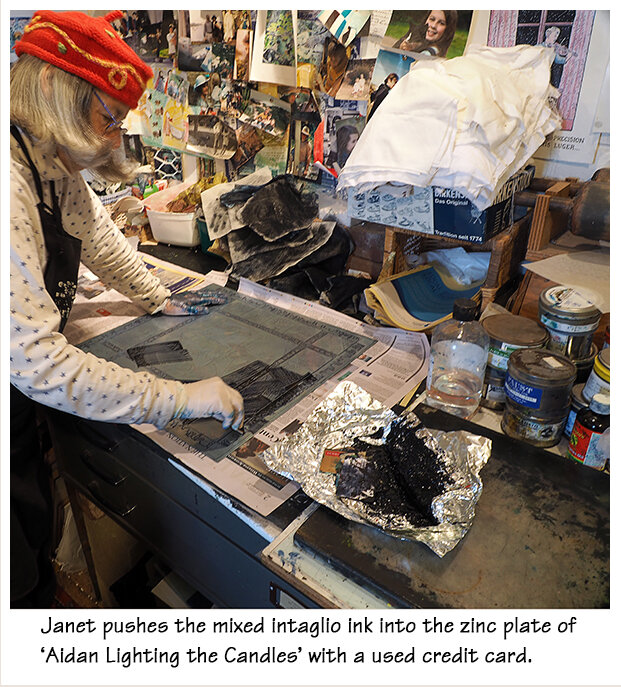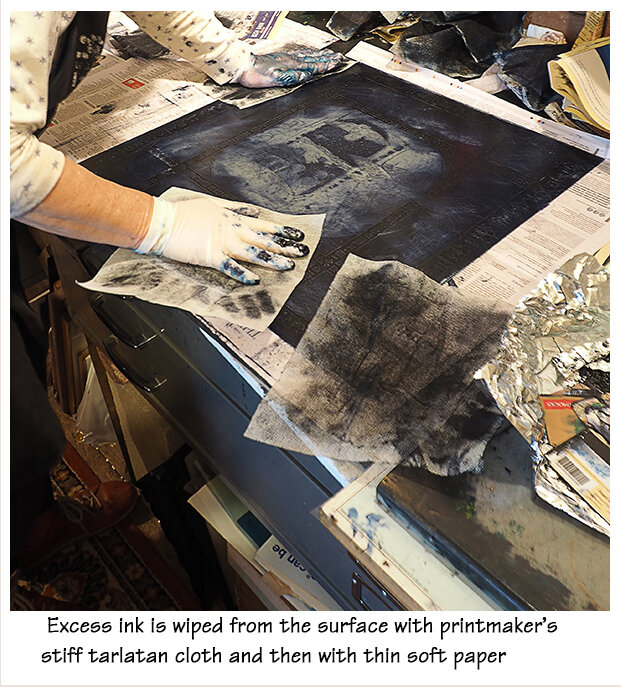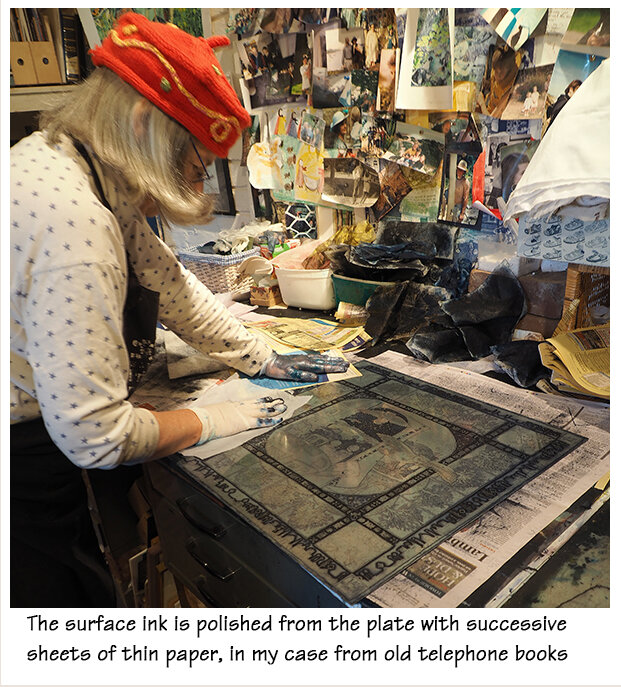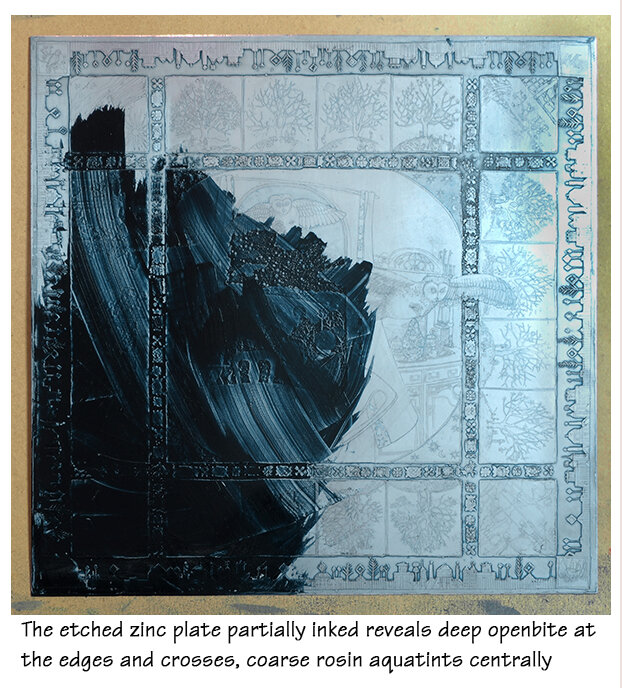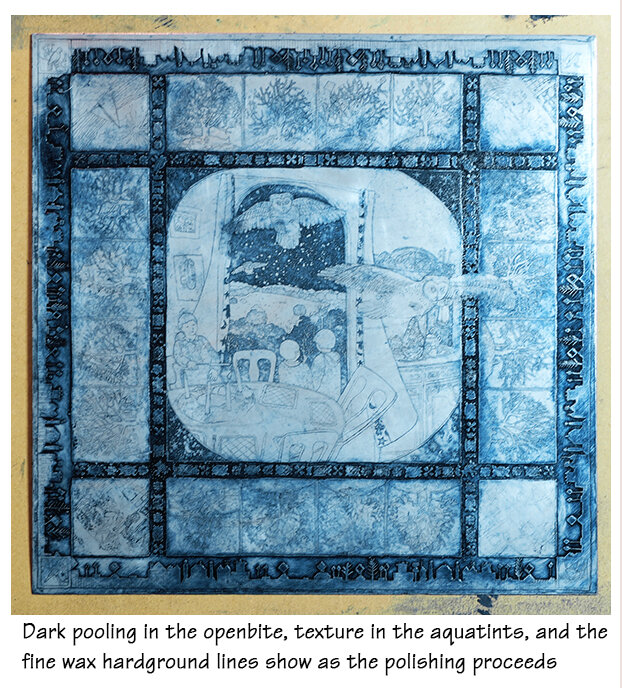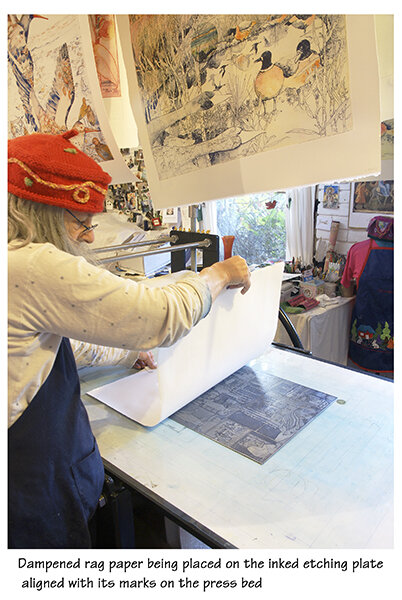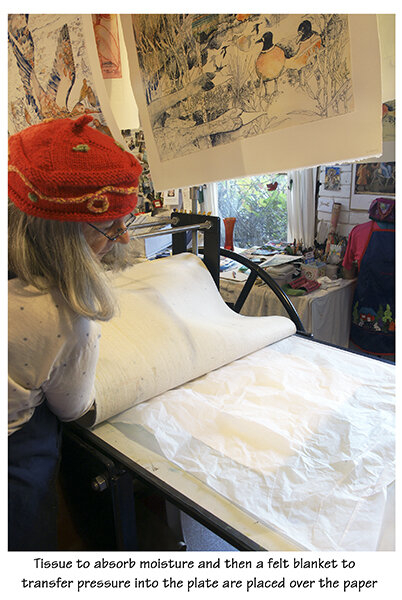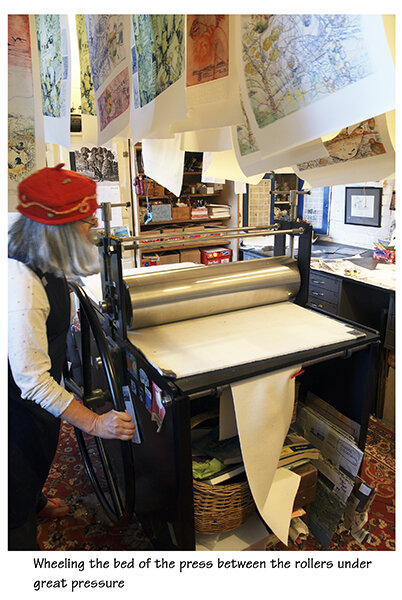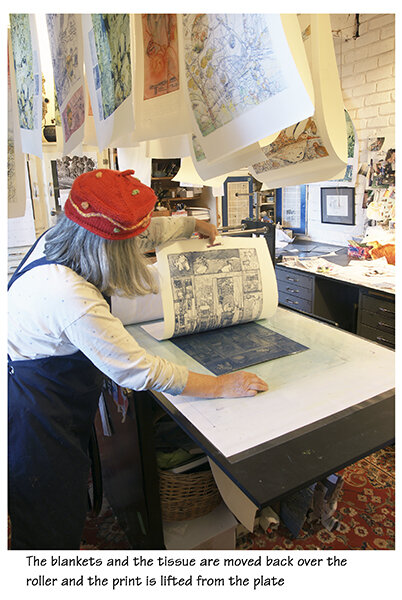What is an Etching and what is Itaglio printing?
Developed by metal workers to decorate weapons and armour during the Rennaissance, the use by artists soon followed. Intaglio (Italian-carve) Etching is a process of printmaking in which flat printing plates have their surface cut into by chemical action under the control of the artist. In an Engraving, the artist physically carves the line with a sharp metal tool. In Drypoint a sharp heavy needle scratches a line without removing any metal. In Intaglio printing, the ink is held below the surface of the plate.
Following on from engraving, the etching technique using copper plates was developed to a high standard in the 17th C by Rembrandt and later by Goya, with the artist Durer one of the first to use it in the early 15th C. The same processes are used today, with the addition of a greater choice of plate materials and more sophisticated colour and multi-plate techniques developed in the 20th C. Today, waxes soft enough to draw through to allow the acid to etch, together with resins and bitumen used to protect the plate from acid and remain polished, are used exactly as they were five hundred years ago.
Dampened paper is laid over the plate and both are fed through the press under great pressure. The plate is re-inked and polished, subsequent nearly identical prints are taken, forming the edition, the total number of impressions taken before the edition is closed.
My earlier etchings and many of my little etchings use the traditional metal-wax-acid method and often use à la poupée inking which uses little rolls of old blanket to ink individual coloured ink into particular areas of the plate. Many use the overprinting of multiple plates each inked with their own colours. These plates must be registered to marks on the paper covering the press.
My later etchings use the solar plate method invented by Dan Weldon and developed with Adelaide’s Pauline Muir that uses light sensitive polymer plates. using drawing and wash techniques on a transparent sheet, UV light and water to etch instead of toxic acids. My first polymer plate etching shows the multiple plate sequence, the paper remains trapped under the roller and each plate is carefully registered to the marks on the press bed
The high quality artist’s pigments and oils that create printmaker’s inks together with with the best natural fibre acid free papers that can last for hundreds of years, have the stable value attached to other fine-art media. Limited editions enable multiple entities to own and enjoy the original work of art.
